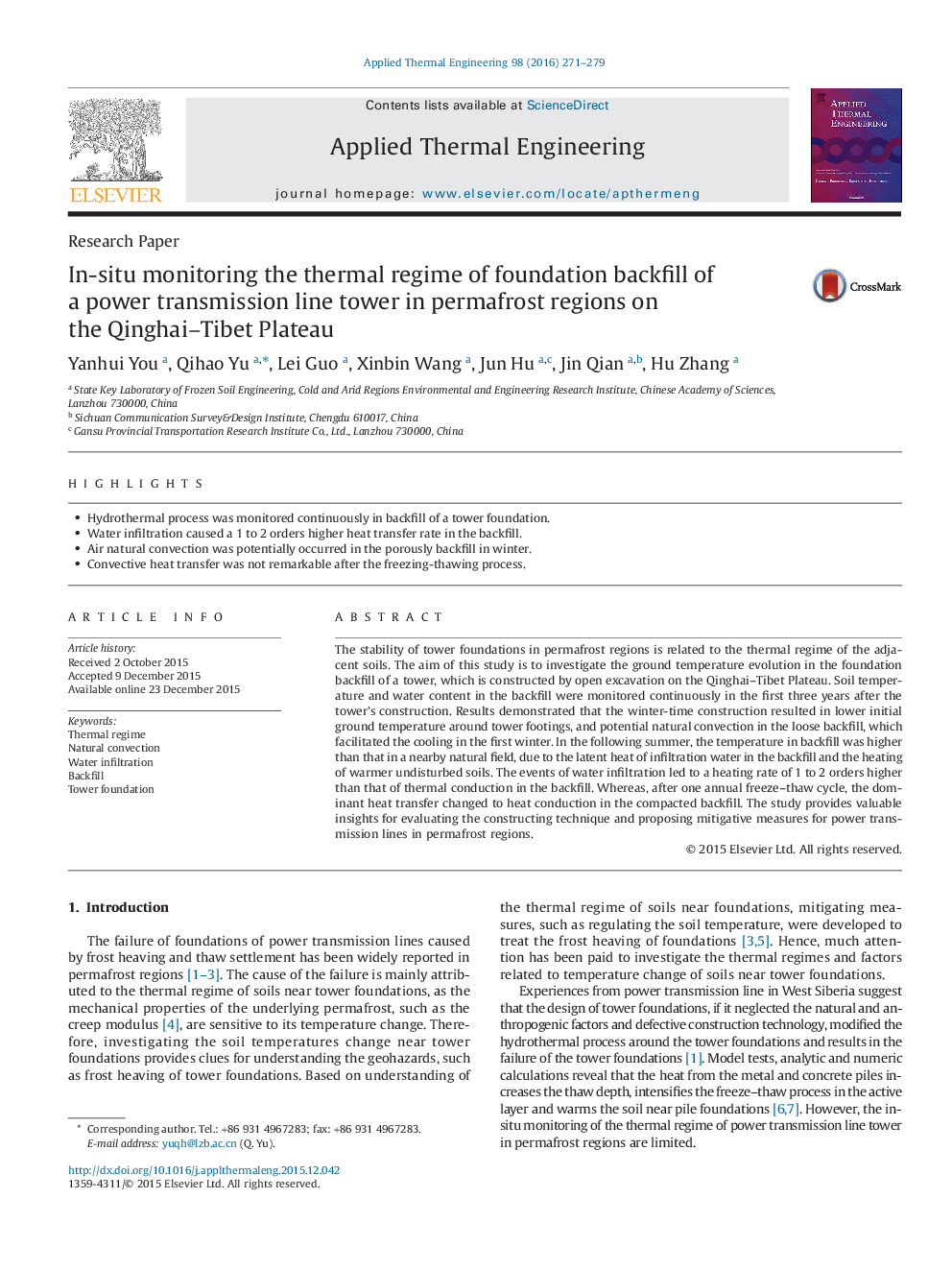| Article ID | Journal | Published Year | Pages | File Type |
|---|---|---|---|---|
| 7048399 | Applied Thermal Engineering | 2016 | 9 Pages |
Abstract
The stability of tower foundations in permafrost regions is related to the thermal regime of the adjacent soils. The aim of this study is to investigate the ground temperature evolution in the foundation backfill of a tower, which is constructed by open excavation on the Qinghai-Tibet Plateau. Soil temperature and water content in the backfill were monitored continuously in the first three years after the tower's construction. Results demonstrated that the winter-time construction resulted in lower initial ground temperature around tower footings, and potential natural convection in the loose backfill, which facilitated the cooling in the first winter. In the following summer, the temperature in backfill was higher than that in a nearby natural field, due to the latent heat of infiltration water in the backfill and the heating of warmer undisturbed soils. The events of water infiltration led to a heating rate of 1 to 2 orders higher than that of thermal conduction in the backfill. Whereas, after one annual freeze-thaw cycle, the dominant heat transfer changed to heat conduction in the compacted backfill. The study provides valuable insights for evaluating the constructing technique and proposing mitigative measures for power transmission lines in permafrost regions.
Related Topics
Physical Sciences and Engineering
Chemical Engineering
Fluid Flow and Transfer Processes
Authors
Yanhui You, Qihao Yu, Lei Guo, Xinbin Wang, Jun Hu, Jin Qian, Hu Zhang,
